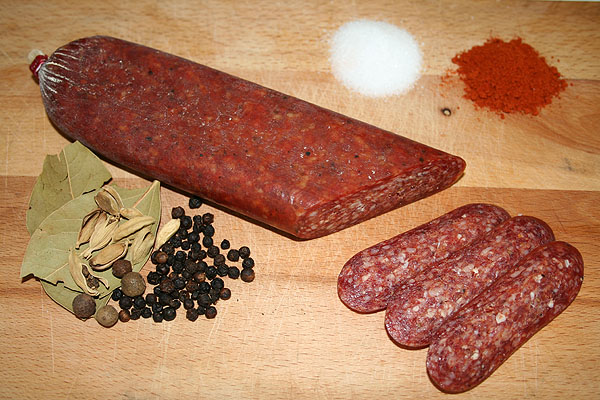Facts About Lukanka
Lukanka is a cherished Bulgarian delicacy that holds a special place in the country's culinary tradition. It bears some resemblance to sujuk but boasts a more robust flavor profile. This semi-dried salami is distinctive for its flattened cylindrical shape and brownish-red interior, encased in a white fungal rind. Its interior, composed of small pieces of meat and fat, offers a unique grainy texture.
The traditional preparation of lukanka involves a meticulous blend of pork, veal, and spices such as black pepper, cumin, and salt. These ingredients are finely minced and stuffed into a dried cow's intestine casing. The salami is then left to dry for 40 to 50 days in a well-ventilated environment, during which it is pressed to achieve its characteristic flat shape. Once cured, lukanka is typically sliced thin and served cold as an appetizer.
The flavor of lukanka varies according to its region of production, influenced by the local microflora. Several areas in Bulgaria are renowned for their high-quality lukanka, particularly in central Bulgaria at the base of the Balkan Mountain range. Prominent regions include Smyadovo, Panagyurishte, and Karlovo. Notably, "Karlovska lukanka" from Karlovo benefits from local name protection, while "Lukanka panagyurska" from Panagyurishte holds the EU's Traditional Specialties Guaranteed (TSG) designation.

 Turkey
Turkey